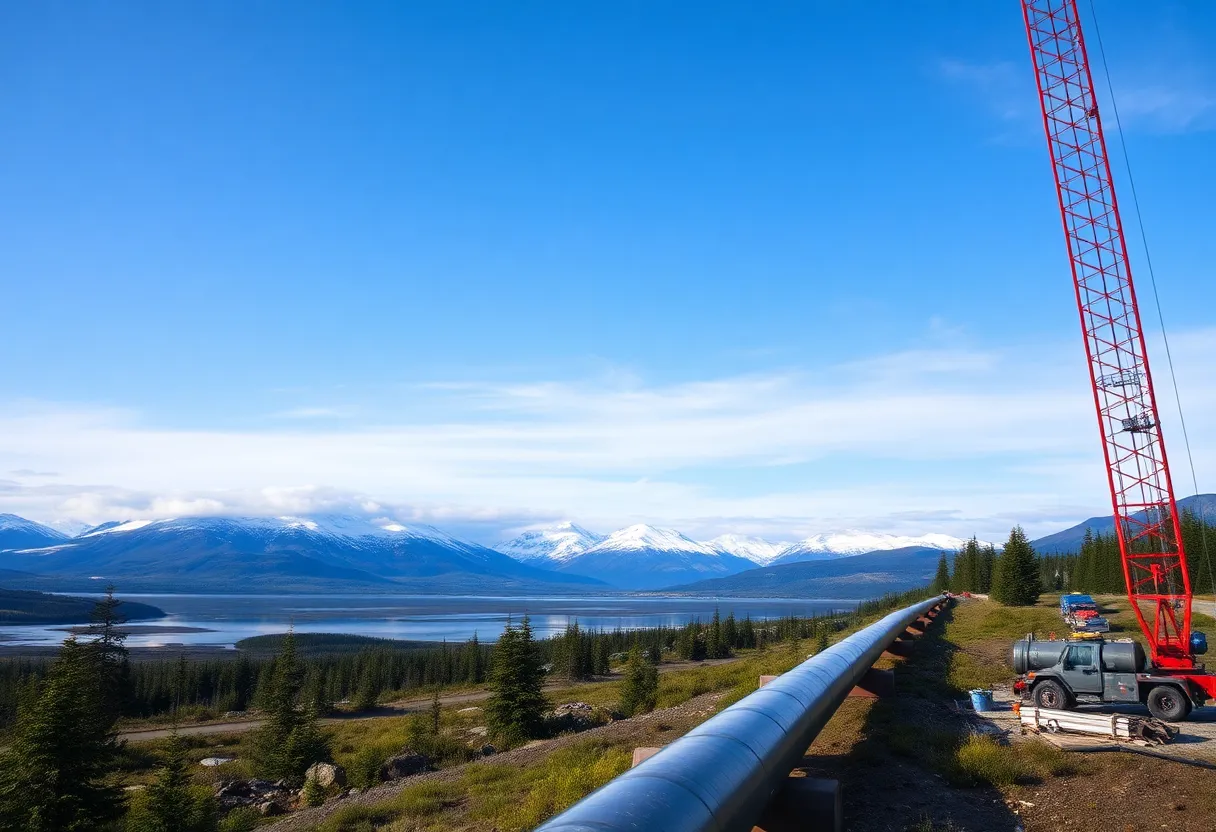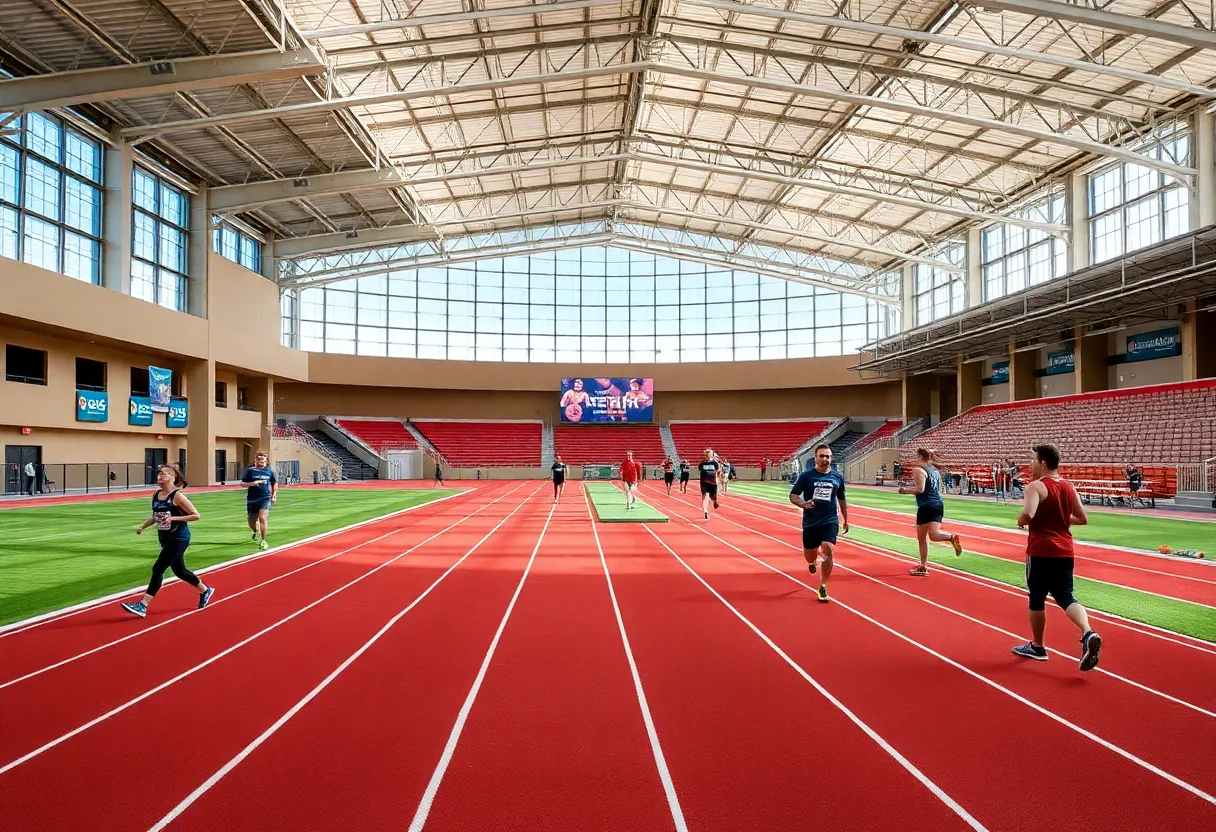Anchorage, Alaska, October 15, 2025
News Summary
Glenfarne Alaska LNG has plans to start constructing its proposed natural gas pipeline in late 2026, with an aim for completion by mid-2029. The project, designed to deliver around 3.5 billion cubic feet of gas daily, still faces regulatory challenges and community skepticism. Governor Mike Dunleavy’s budget cuts due to declining oil revenues add to the obstacles, but there is some support at state and federal levels. Environmental concerns and the need for additional permits make the future of this initiative uncertain.
Anchorage, Alaska – Glenfarne Alaska LNG has announced plans to commence construction on its proposed pipeline in late 2026, aiming for the project to be operational by mid-2029. The revelation follows a meeting involving Glenfarne Alaska LNG President Adam Prestidge and Japanese Consul Kiyohiko Hamada, along with representatives from 8 Star Alaska, a subsidiary of the Alaska Gasline Development Corporation (AGDC). While this update reflects Glenfarne’s projections, it is crucial to note that there has been no confirmation from the Japanese government regarding their involvement.
The proposed pipeline is designed to deliver approximately 3.5 billion cubic feet of gas daily and will primarily follow the route of the existing Trans-Alaska Pipeline System. The project’s recent developments align with comments made by Interior Secretary Doug Burgum, who hinted that construction could indeed start as early as 2026 in a bid to enhance Alaska’s liquefied natural gas (LNG) export capacity.
However, the project is not without challenges. Glenfarne faces multiple regulatory hurdles, with three essential permits still pending before construction can officially begin. Additionally, Alaska’s current financial landscape poses significant challenges. The state has seen budget pressures increase, leading Governor Mike Dunleavy to veto various funding bills and cut more than $100 million from the state’s budget due to declining oil revenues.
Despite the pressures, discussions regarding the feasibility and potential of the project have been ongoing. Meetings have been held by the Alaska Gasline Caucus, where officials expressed hope that construction could commence by mid-2026. The overall framework for the project gained some support during the administration of former President Donald Trump, who committed to advancing Alaska’s LNG capabilities through executive orders aimed at expediting energy developments in the state.
Nevertheless, the path forward is fraught with complexity. Environmental concerns have been expressed regarding the impact of the pipeline on wildlife and traditional lands, creating a substantial divide among the community. While some support the project at both state and federal levels, skeptics, particularly among environmental groups, continue to voice concerns about its implications.
Glenfarne has not yet disclosed any information regarding the total cost of the pipeline project or its funding sources. Over the past 25 years, the state has invested nearly $1 billion into gas line development efforts, and Glenfarne has secured a 75% stake in the project from AGDC. Previous LNG proposals in Alaska have failed due to similar financial challenges and regulatory delays, raising questions about the current project’s feasibility amidst volatile oil prices and competitive market conditions.
Key Details of the Project:
- Proposed start of construction: Late 2026
- Expected operational date: Mid-2029
- Pipeline capacity: Approximately 3.5 billion cubic feet of gas per day
- Regulatory hurdles: Three permits pending
- Total state spending on gas line efforts over 25 years: Nearly $1 billion
- Construction support from federal and state levels, despite skepticism from some community members
Conclusion:
The future of the Glenfarne Alaska LNG pipeline project is shrouded in uncertainty as it braces for regulatory challenges and scrutiny from various stakeholders. As Alaska continues to navigate its budget constraints and explores energy expansion opportunities, the situation surrounding the LNG pipeline will remain a focal point for both supporters and critics alike.
FAQ Section
What is the Glenfarne Alaska LNG pipeline project?
The project aims to construct a pipeline to deliver approximately 3.5 billion cubic feet of gas per day, primarily following the route of the Trans-Alaska Pipeline System.
When is construction expected to begin?
Construction is planned to start in late 2026, with projections for the project to be operational by mid-2029.
What challenges does the project face?
Key challenges include pending regulatory permits, Alaska’s budget pressures, and environmental concerns regarding the pipeline’s impact.
How much has the state of Alaska invested in gas line efforts?
Over the past 25 years, the state has spent nearly $1 billion on various gas line development efforts.
What support exists for the project?
There is state and federal support for the project, although some community members and environmental groups express skepticism and concern.
Deeper Dive: News & Info About This Topic
HERE Resources
Additional Resources
- Alaska News Source
- Wikipedia: Natural Gas in Alaska
- Anchorage Daily News
- Google Search: Alaska LNG Pipeline
- Rolling Stone
- Google Scholar: Alaska LNG Project
- New York Times
- Encyclopedia Britannica: Alaska LNG
- Reuters
- Google News: Alaska LNG Pipeline
Author: STAFF HERE HOUSTON TX WRITER
The HOUSTON STAFF WRITER represents the experienced team at HEREHouston.com, your go-to source for actionable local news and information in Houston, Harris County, and beyond. Specializing in "news you can use," we cover essential topics like product reviews for personal and business needs, local business directories, politics, real estate trends, neighborhood insights, and state news affecting the area—with deep expertise drawn from years of dedicated reporting and strong community input, including local press releases and business updates. We deliver top reporting on high-value events such as Houston Livestock Show and Rodeo, Art Car Parade, and Chevron Houston Marathon. Our coverage extends to key organizations like the Greater Houston Partnership and Houston Area Urban League, plus leading businesses in energy and healthcare that power the local economy such as ExxonMobil, Schlumberger, and Houston Methodist. As part of the broader HERE network, including HEREAustinTX.com, HERECollegeStation.com, HEREDallas.com, and HERESanAntonio.com, we provide comprehensive, credible insights into Texas's dynamic landscape.





